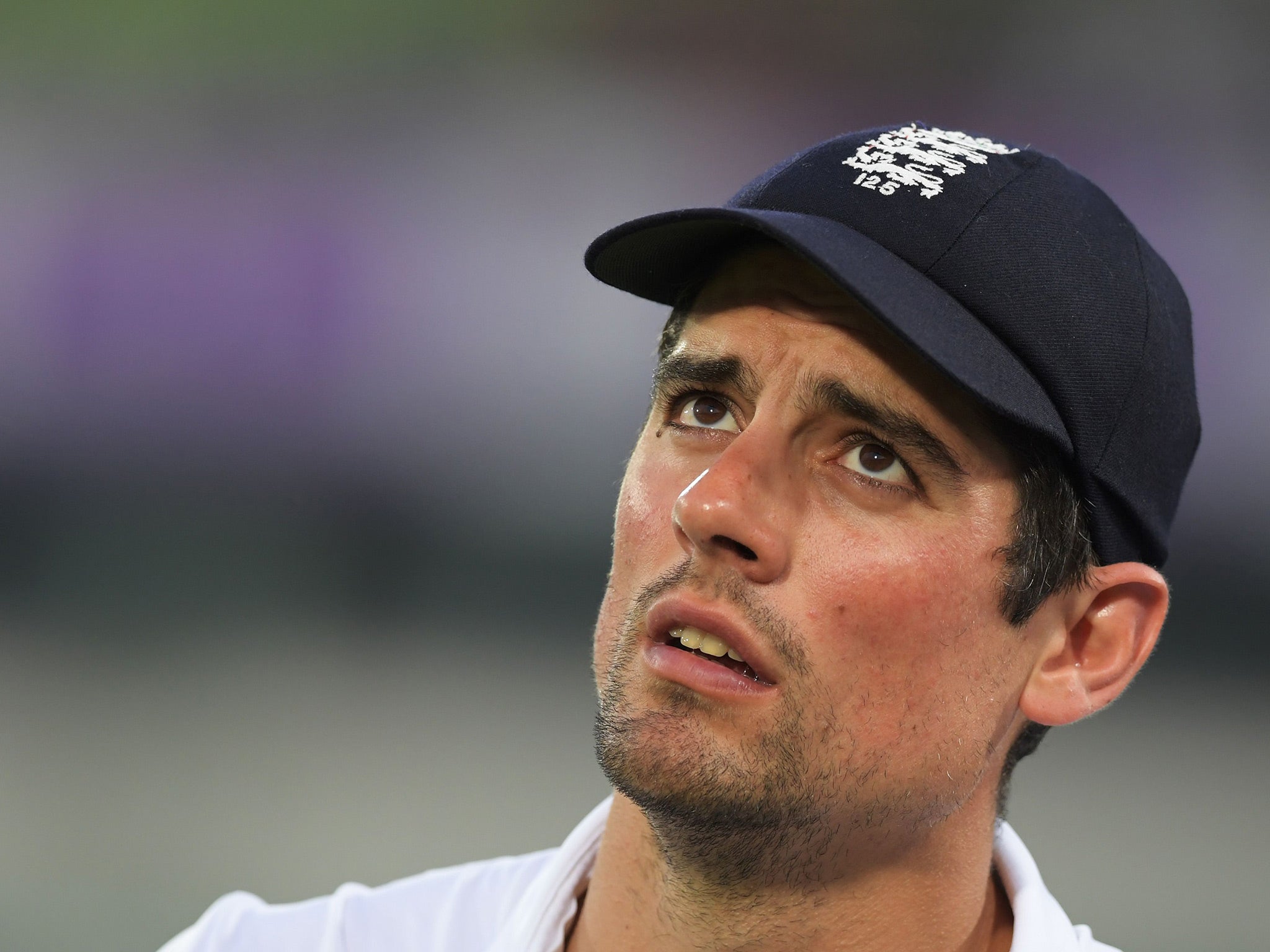Whether Alastair Cook stays on as captain or not, England’s problems run much deeper
England's inconsistency can be put down to a number of factors, not just Cook's captaincy

Your support helps us to tell the story
From reproductive rights to climate change to Big Tech, The Independent is on the ground when the story is developing. Whether it's investigating the financials of Elon Musk's pro-Trump PAC or producing our latest documentary, 'The A Word', which shines a light on the American women fighting for reproductive rights, we know how important it is to parse out the facts from the messaging.
At such a critical moment in US history, we need reporters on the ground. Your donation allows us to keep sending journalists to speak to both sides of the story.
The Independent is trusted by Americans across the entire political spectrum. And unlike many other quality news outlets, we choose not to lock Americans out of our reporting and analysis with paywalls. We believe quality journalism should be available to everyone, paid for by those who can afford it.
Your support makes all the difference.For the ICC to have anointed Alastair Cook ‘Captain of the Year’ in the wake of England’s disastrous tour of India and Bangladesh is moderately embarrassing. But it demonstrates the point that there are no really dominant sides in world cricket just now.
India are a mighty force at home but played little cricket elsewhere in the period under consideration by the ICC’s judging panel (September 2015-September 2016). Beating the West Indies in the Caribbean isn’t the feat it once was. Cook, meanwhile, benefited from having won a difficult series last winter in South Africa, then thrashing Sri Lanka at home, before drawing a tight encounter with Pakistan.
As Captain of the Year, then, Cook has the chance to go out on a high, if indeed he decides to step down as England skipper. Indeed, such has been his overall record since taking over at the helm in 2010 that this winter’s poor showing would quickly be forgotten. Better that than risking a long decline ending in Ashes disaster.
Cook though is not solely responsible for England’s lack of consistency in the last year or so. It is instructive in particular to consider the vagaries of selection, which at their most bizarre have led to Moeen Ali filling every spot in the batting line-up between opener and number 9 (with the exception of number 6). In twenty tests, Cook has had five different opening partners. Among the batsmen who have lined up for England, Compton, Hales, Ballance, Vince, Duckett and Bell have all been and gone. Some might reappear, but don’t count on it. James Taylor seemed to be the future rock of the middle-order but was forced to retire through ill-health.
Among the bowlers too there has been plenty of chopping and changing, not to mention a worrying number of injuries. James Anderson and Stuart Broad may roar back to their best with a seaming ball in the English summer but they are entering their twilight years and beyond them lies considerable uncertainty as far as long-term replacements go.
In theory England should have a solid core for next year, fitness permitting: Cook, Hameed, Jennings, Root, Bairstow, Stokes, Ali, Anderson and Broad – with Woakes, Wood, Ball, Buttler and Rashid pushing to make up the XI. There are other Lions who could shove themselves into the frame. Yet despite this apparent strength in key personnel England keep doing a good impression of a team in transition. The ongoing debate over Cook’s captaincy doesn’t help, but nor do errors in selection. The former issue is easy to solve; the latter may be more important.
Action rule in need of relaxation

Poor Jack Leach. After a brilliant season for Somerset, he was overlooked for England’s senior tour and then missed out on a call-up to replace the injured Zafar Ansari because of concerns about his action.
The question marks arose during routine end-of-season testing and seem to have come as a shock to all involved, including Leach. The suggestion that his regular action breached the 15-degree limit for straightening at the elbow caused particular surprise because to the naked eye it looked stereotypically classical.
All of this highlights yet again the fairly arbitrary rule which governs the whole issue. For some bowlers there are certainly differences when they bowl a particular delivery – notably a doosra for a finger-spinner. But in cases where a bowler’s stock ball is bowled with an action that causes no complaint at all, the 15-degree limit becomes a mockery, not least because the action is only likely to be tested at the point when the bowler is close to achieving international honours.
The ECB has spent a great deal of time on strategies to encourage the development of spin bowlers in this country. The no-toss rule may yet turn out in the long-term to be a terrific intervention. But another way to help would be to push for a relaxation of the current regulations which have caused such difficulty for Leach.
Russell and Thunder look off-colour
This year’s Big Bash is underway, with West Indian Andre Russell having made headlines for his audacious pink and black bat, which was banned after it left marks on the ball. Coloured bats are permitted in the BBL; but evidently not if the paint hasn’t dried.
Then again, for Russell watching paint dry might be preferable to watching his team’s performances. Two matches in and Sydney Thunder, led by Eoin Morgan, have been on the wrong end of a brace of hidings. Maybe cricket is less art and more science after all.
Join our commenting forum
Join thought-provoking conversations, follow other Independent readers and see their replies
Comments